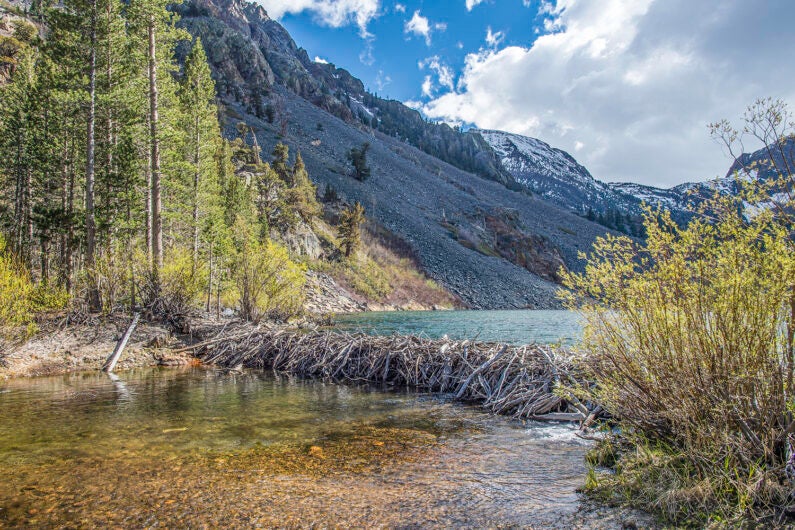Doesn’t Jesus say something about the prophet being accepted everywhere but in his home town? Well let’s say that applies to beavers and Sacramento too, because they’ve been very slow to say anything nice about their once not-native rodent. That is until this morning, When they were on Cap radio.![]()
A new study finds beaver dams can boost water quality during a drought
 The beaver dam showed up right in the middle of Christian Dewey’s research site. As the lead of a Stanford study, Dewey spent months looking at water quality along the Colorado River. This river is a water source for numerous states aside from Colorado, including Arizona, Utah and California.
The beaver dam showed up right in the middle of Christian Dewey’s research site. As the lead of a Stanford study, Dewey spent months looking at water quality along the Colorado River. This river is a water source for numerous states aside from Colorado, including Arizona, Utah and California.
The dam re-directed the study. In the end, researchers unearthed a surprising finding: the beaver dam played an important part in improving water quality in the river – so much so that in some areas, it’s mitigating water degradation caused by drought and climate change.
Dewey observed the dam during the summer of 2018, a drought year for multiple states, including Colorado. Dewey said that when water levels are low, minerals tend to become concentrated in the river. This deterioration of water quality can have devastating ecological impacts.
One example of that degradation is a high level of nitrates in the water. When the mineral is too concentrated in a river, it can cause explosive algae growth. When that algae dies and begins to decay, it eats up “dissolved oxygen,” which refers to the level of oxygen in the water. This can negatively impact species throughout the surrounding ecosystem.
“When dissolved oxygen levels suddenly drop, those species become imperiled,” Dewey said. “If we have all these watersheds contributing nitrate to the Colorado River, then the more nitrate within each watershed that ends up downstream is potentially a problem.”
But as Dewey took samples of water downstream from the beaver dam, he realized that its quality was improving. The dam was pushing water out toward the sides of the river, where it would then have to move through soil before reentering.
“The soils then essentially acted as a filter and removed that nitrate,” he said. “And so the water discharged from the soils was lower in nitrate than it was when it entered the soils.”
Yes that’s the way it works. Pretty darn shocking for everyone that isn’t reading this website right now but I’ll bet sacramento was BESIDE themselves.
 “Where our study site was up and near Crested Butte, Colorado, you can see pronounced beaver activity that you didn’t see 50 years ago,” said Fendorf. “These ecosystem responses, the rebound of the American Beaver, is actually having this really counter impact on the degradation we’re seeing from climate change.”
“Where our study site was up and near Crested Butte, Colorado, you can see pronounced beaver activity that you didn’t see 50 years ago,” said Fendorf. “These ecosystem responses, the rebound of the American Beaver, is actually having this really counter impact on the degradation we’re seeing from climate change.”
Fendorf said that different species play large roles in their environments – many of which researchers might not yet know about, as was the case with this finding.
“This is a sign of why it’s so important for us to have ecological preservation,” he said. “Healthy people [come] from having a healthy planet, meaning a healthy, thriving ecosystem.”
Well of course they do. I wrote Dr. Fendorf this weekend and introduced myself saying Worth A Dam had tons of video and photos documenting the difference beavers make in an urban streams and suggesting he let us know if we could help in anyway. And he wrote back much impressed and said he loved our name.
To which I said again, “Of course.”










































